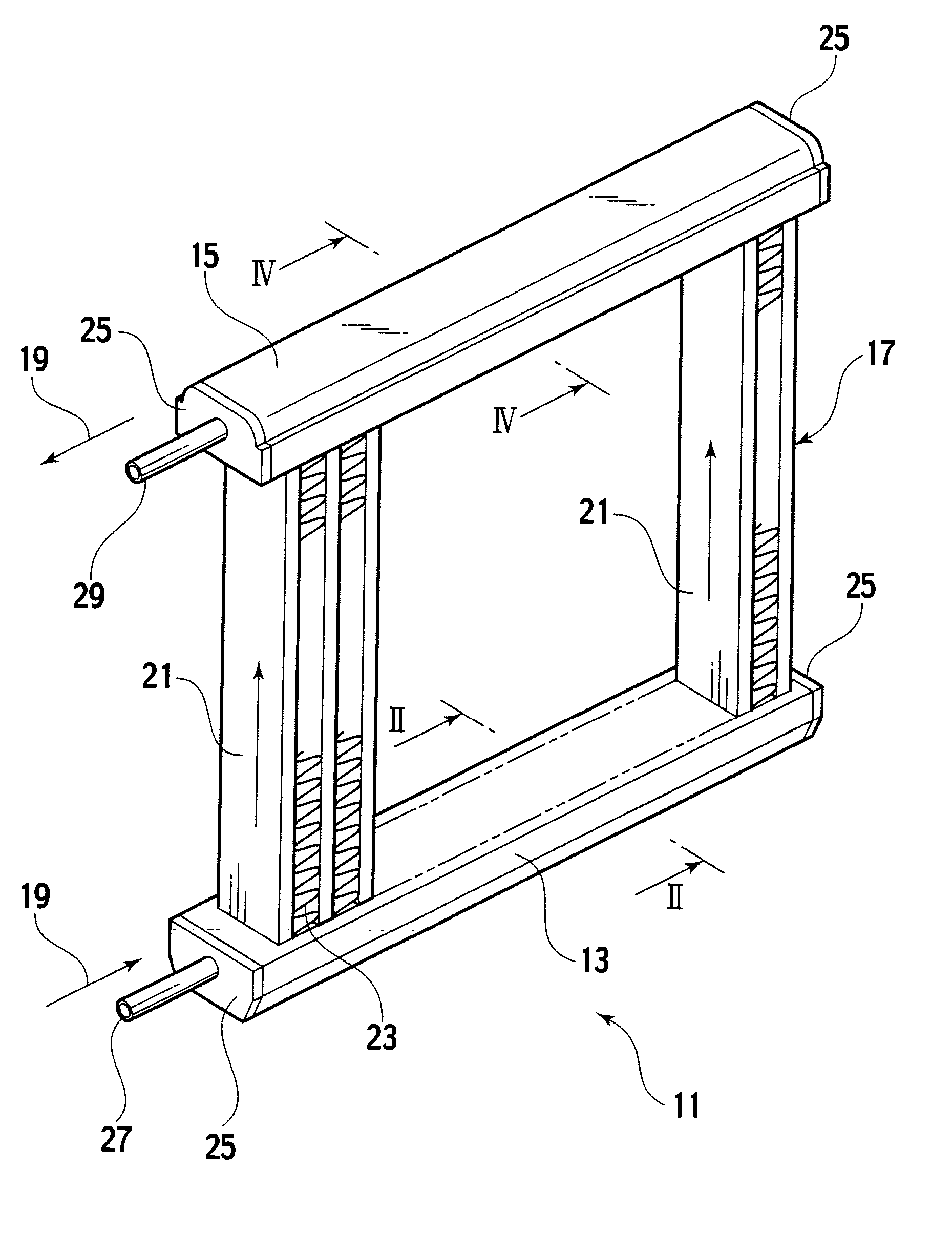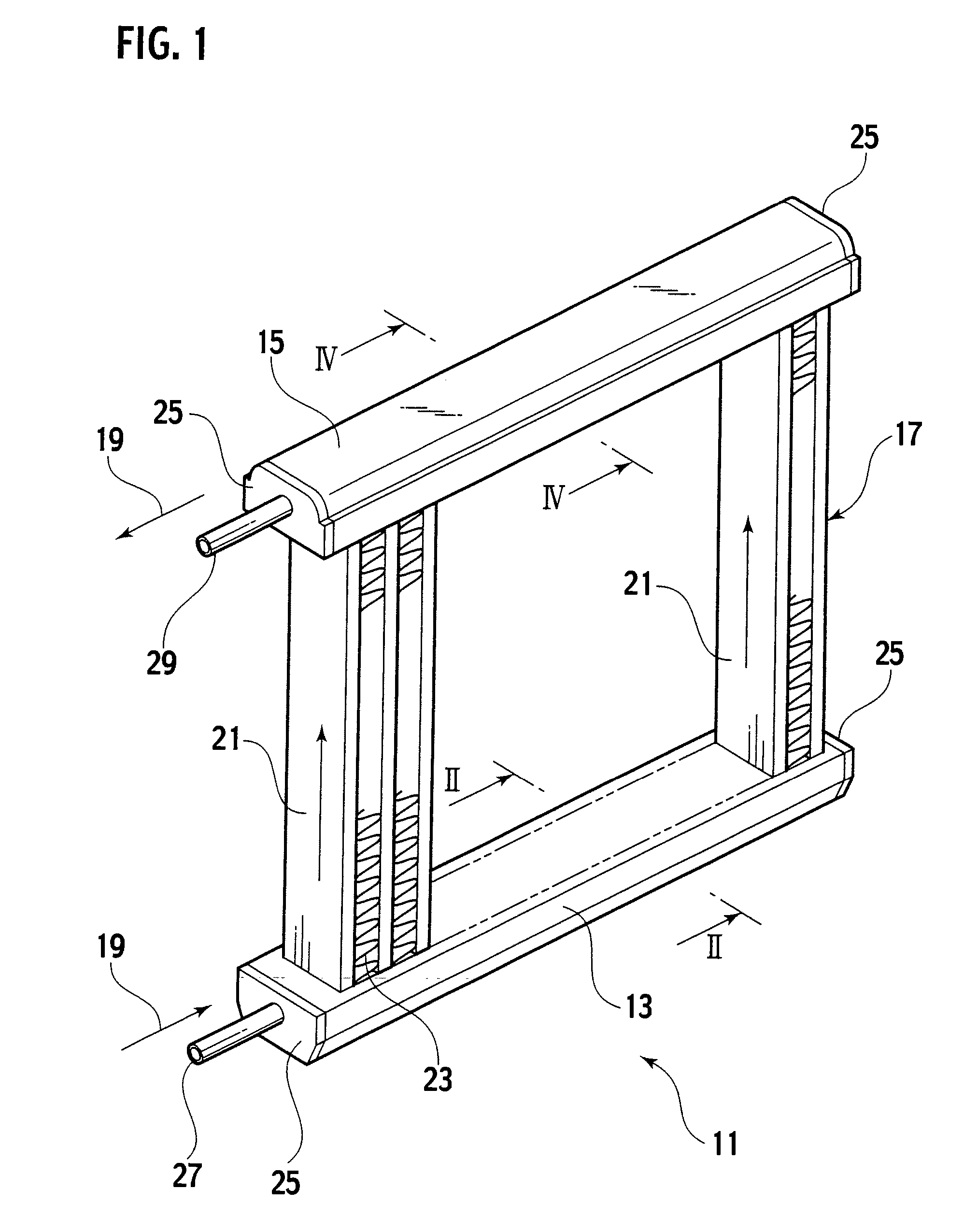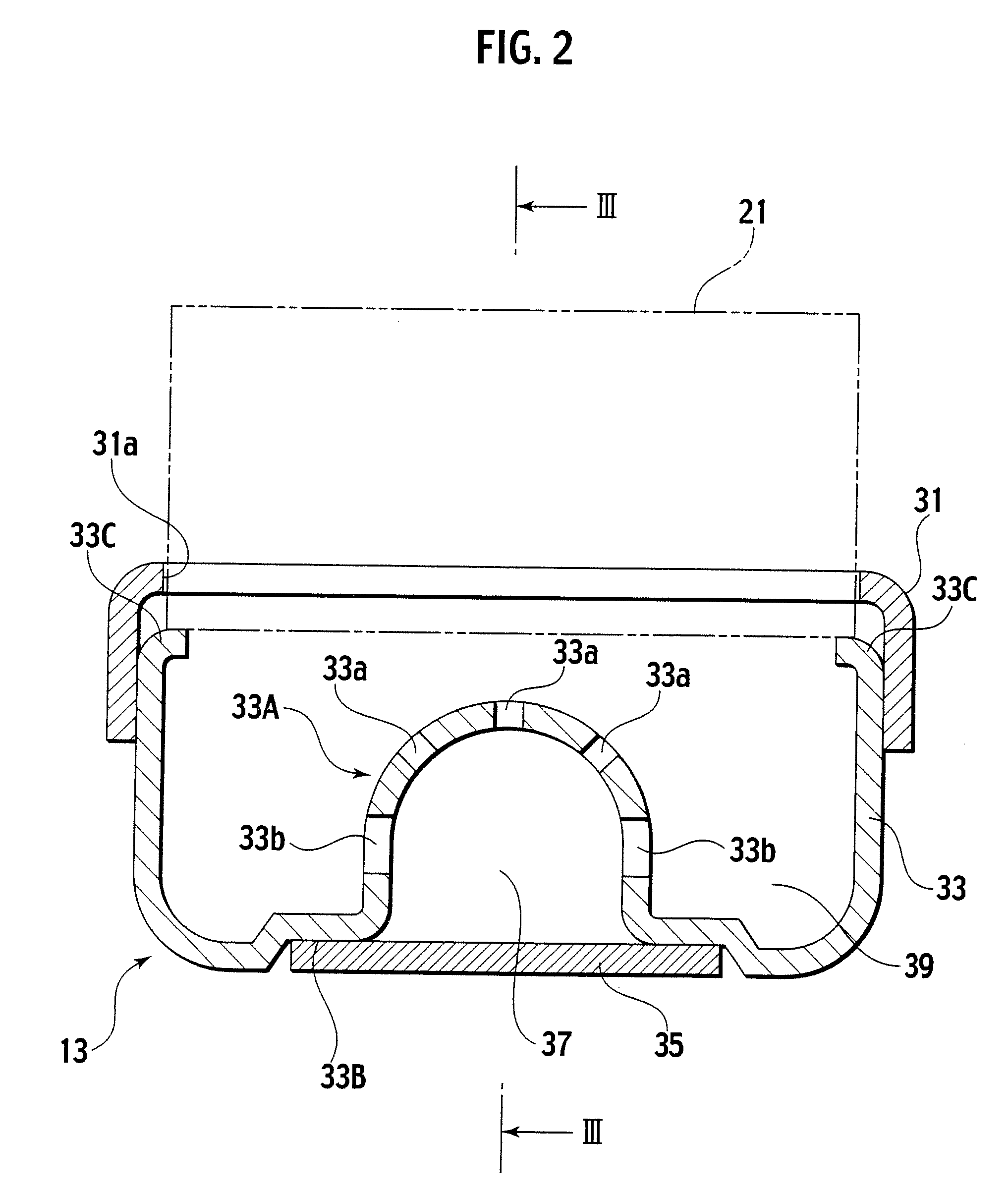Header Tank for Heat Exchanger
a heat exchanger and header technology, applied in indirect heat exchangers, light and heating apparatus, other domestic objects, etc., can solve the problems of increasing component cost, increasing assembly cost, and unable to avoid cost increase, so as to reduce manufacturing cost, reduce component cost, and reduce assembly cost
- Summary
- Abstract
- Description
- Claims
- Application Information
AI Technical Summary
Benefits of technology
Problems solved by technology
Method used
Image
Examples
first embodiment
[0051]FIG. 1 is an external perspective view showing an entire structure of a heat exchanger according to an embodiment. A heat exchanger 11 roughly includes a lower header tank 13, an upper header tank 15, and a heat exchanger core 17. The heat exchanger core 17 includes a plurality of tubes 21, through which refrigerant 19 flows, and cooling fins 23. The tubes 21 and cooing fins 23 are alternately arranged. The lower end of the heat exchanger core 17 is connected to the lower header tank 13 and communicates with an end of each tube 21. The upper end of the heat exchanger core 17 is connected to the upper header tank 15 and communicates with the other end of each tube 21.
[0052] Both ends of the lower header tank 13 are closed by end plates 25. One of the both ends is connected to an inlet pipe 27, which supplies the refrigerant 19. The both ends of the upper header tank 15 are also closed by end plates 25. One of the both ends is connected to an outlet pipe 29, which discharges th...
second embodiment
[0069] Next, a description is given of a structure of a lower header tank 73 according to a second embodiment. Hereinafter, portions equivalent to those of the first embodiments are indicated by same reference numerals, and redundant descriptions of the structure and operational effects are properly omitted.
[0070]FIG. 5 is a cross-sectional view showing a structure of the lower header tank 73, which corresponds to a cross-sectional view along II-II of FIG. 1. This lower header tank 73 includes a lower tank upper 51 and a lower tank lower 53.
[0071] The lower tank upper 51 as a tank constituent member is shaped to have a square U-shaped section by bending both ends of a plate material. The flat part thereof includes tube insertion holes 51a for connection of tubes 21. The tube insertion holes 51a are formed at regular intervals along the longitudinal direction. The lower tank lower 53 is shaped to have a Q-shaped section by bending (or extruding) center part of a plate material, thu...
third embodiment
[0078]FIG. 7 is a cross-sectional view showing a structure of a lower header tank 83 according to a third embodiment, which corresponds to a cross-sectional view along II-II of FIG. 1. The lower header tank 83 is formed into a tubular shape with a square section by bending a single plate material or a single pipe material (in the case of the plate material, joining the seam after bending). Flat part in the upper face includes tube insertion holes 61a for connection of the tubes 21. The tube insertion holes 61a are formed at regular intervals in the longitudinal direction. The center part in the lower face is shaped to have a Q-shaped section, thus integrally forming a refrigerant distribution portion 63A with a circular section with the body of the lower header tank 83.
[0079] The refrigerant distribution portion 63A includes a plurality of refrigerant communication holes 63a and 63b in the longitudinal direction. Among these, the communication holes 63a allow passage of refrigerant...
PUM
| Property | Measurement | Unit |
|---|---|---|
| Diameter | aaaaa | aaaaa |
| Current | aaaaa | aaaaa |
| Thickness | aaaaa | aaaaa |
Abstract
Description
Claims
Application Information
 Login to View More
Login to View More - R&D
- Intellectual Property
- Life Sciences
- Materials
- Tech Scout
- Unparalleled Data Quality
- Higher Quality Content
- 60% Fewer Hallucinations
Browse by: Latest US Patents, China's latest patents, Technical Efficacy Thesaurus, Application Domain, Technology Topic, Popular Technical Reports.
© 2025 PatSnap. All rights reserved.Legal|Privacy policy|Modern Slavery Act Transparency Statement|Sitemap|About US| Contact US: help@patsnap.com



